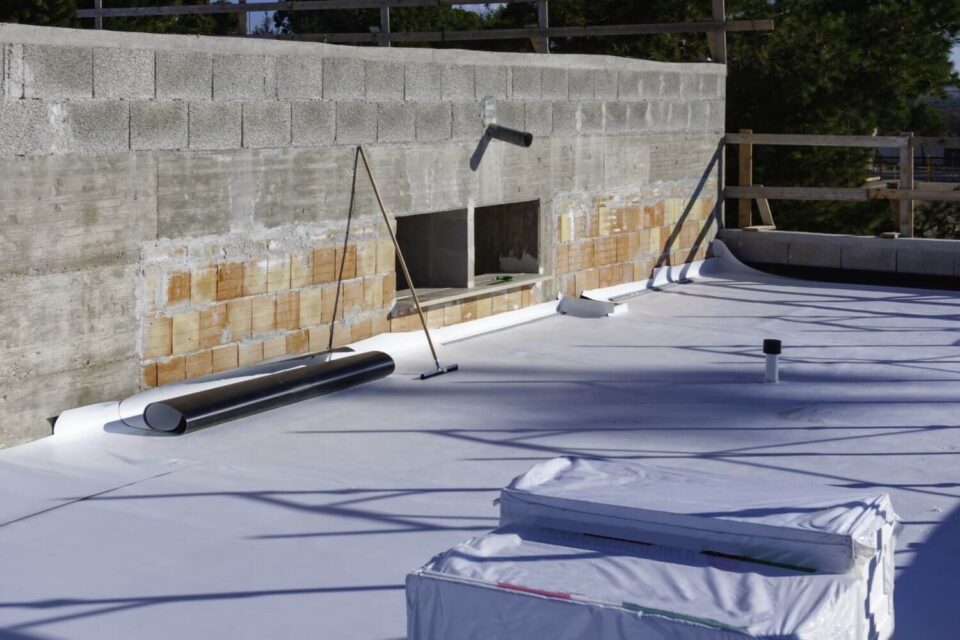Roof waterproofing is a critical aspect of maintaining the integrity of your home. It protects your structure from water damage, mold growth, and various other problems that can arise from leaks. But a lot of people make mistakes when they protect their homes, which can cost a lot to fix and cause even more damage in the future. This article will talk about some common mistakes people make when sealing their roofs and give you tips on how to avoid them so your roof stays in great shape for years to come.
Skipping Professional Assessment
Mistake: One of the most significant errors homeowners make is attempting to waterproof their roofs without a professional assessment. Relying solely on DIY methods can lead to ineffective solutions and overlooking underlying issues.
Solution: Always begin with a thorough inspection by a qualified roofing contractor. They can identify existing problems, such as cracks, missing shingles, or weak areas, that need to be addressed before landed waterproofing. The professionals will also figure out what kind of protection system will work best for your roof, whether it’s flat, pitched, or something else.
Neglecting Proper Cleaning
Mistake: Before applying any waterproofing material, many homeowners neglect the crucial step of cleaning their roofs thoroughly. Dirt, debris, and algae can prevent proper adhesion and reduce the effectiveness of the waterproofing.
Solution: Take the time to clean your roof properly. This includes removing leaves, moss, and any other debris. Use a solution made just for cleaning roofs or a mixture of water and light detergent to get rid of tough stains or growths like moss and algae. Ensure the roof is dry before applying any waterproofing product, as moisture can hinder adhesion.
Choosing the Wrong Waterproofing Product
Mistake: With various waterproofing products available on the market, choosing the wrong one for your specific roof type and environment can lead to poor results.
Solution: Research and select a waterproofing product that is suitable for your roof type. Consider factors such as climate, roofing material, and the expected lifespan of the product. Consult with professionals or read reviews to understand the best options available. Common types of waterproofing materials include liquid membranes, bituminous membranes, and waterproofing paints.
Improper Application Techniques
Mistake: Incorrect application of waterproofing materials can lead to gaps, bubbles, or uneven coverage, which can compromise the entire waterproofing effort.
Solution: Follow the manufacturer’s instructions meticulously when applying waterproofing materials. You might want to hire professionals who have experience with the application process if you’re not sure how to do it. They will ensure that the product is applied evenly and in the correct manner to achieve optimal results.
Ignoring Existing Damage
Mistake: Some homeowners may choose to waterproof their roofs without addressing existing damage, assuming that the waterproofing will cover up the issues. This can lead to more significant problems down the line.
Solution: Before waterproofing, repair any existing damage, such as leaks, cracks, or holes. Ignoring these issues will only result in water seeping through, rendering your waterproofing efforts ineffective. Before waterproofing starts, these problems can be found and fixed with the help of a professional’s thorough inspection.
Not Considering Drainage
Mistake: Proper drainage is important because water can pool on the roof if you don’t. This can make the sealing less effective.
Solution: Ensure that your roof has proper drainage systems in place, including gutters, downspouts, and drainage channels. Check these systems often to make sure they are not clogged and are working properly. If your roof is flat, you might want to add a small slope to help water drain off.
Underestimating the Importance of Regular Maintenance
Mistake: Many homeowners think that once their roof is waterproofed, it will remain in good condition indefinitely. This misconception can lead to neglect and deterioration over time.
Solution: Even after sealing, you should still have your roof inspected and maintained on a regular basis. This means clearing out the gutters, cleaning them, and looking for damage or signs of wear. If you find problems early on, you can avoid having to make bigger fixes later on.
Failing to Address Environmental Factors
Mistake: Environmental factors, such as heavy rain, extreme heat, or high winds, can impact the effectiveness of your roof waterproofing. Many homeowners do not consider these factors during the waterproofing process.
Solution: Choose waterproofing products designed to withstand your local climate conditions. For instance, if you live in an area with heavy rainfall, select products with superior water resistance. Understanding the environmental factors at play can help you select the right materials and ensure effective waterproofing.
Conclusion
Roof waterproofing is a critical aspect of maintaining the health and longevity of your home. You can keep your roof safe from water damage by not doing common things like skipping professional inspections, not cleaning it properly, and not using the right products. With professional help, regular care, and close attention to detail, you can build a strong waterproofing system that will last for years. Take the steps you need to make sure your roof is properly waterproofed to protect your investment and your house.

